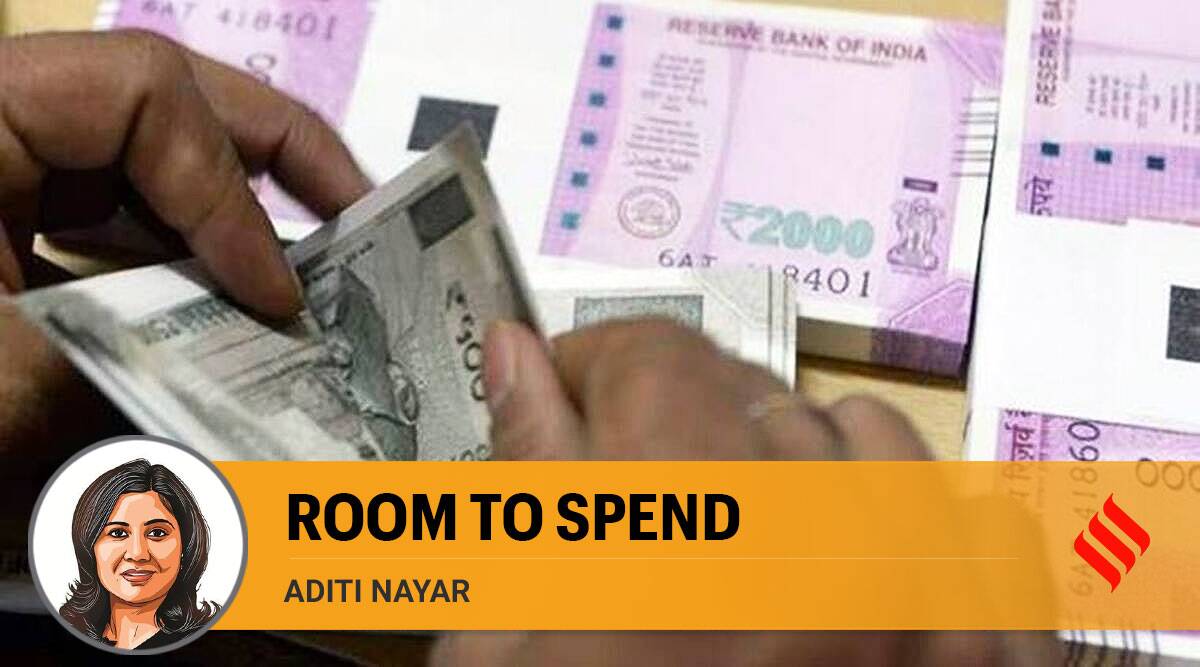Why states ought to utilise fiscal room to ramp up capital spending

From a fiscal perspective, state governments are in a powerful place to emerge as key drivers of financial progress this 12 months. However whereas the provision of funds doesn’t seem like a constraint, surprisingly, precise spending by states up to now has been moderately muted. Their capability to ramp up capital expenditure through the the rest of the 12 months, and benefit from the fiscal house that we imagine they’ve, might be a key determinant of the mixture fiscal impulse to the financial system. This evaluation is predicated on 13 main state governments — Andhra Pradesh, Gujarat, Haryana, Karnataka, Kerala, Madhya Pradesh, Maharashtra, Punjab, Rajasthan, Tamil Nadu, Telangana, Uttar Pradesh and West Bengal — that account for 85 per cent of India’s GDP.
These 13 states had pegged their capital spending at Rs 5.8 trillion in 2022-23, a pointy uptick from the precise spending of Rs 4.1 trillion in 2021-22. Our estimates, nevertheless, counsel that these states even have the fiscal house to ramp up capital spending considerably — roughly Rs 7.4 trillion this 12 months — which might rival the central authorities’s budgeted capital expenditure for the 12 months.
To be able to estimate the capital outlay and web lending of those states, we have now first calculated the sources which are prone to be accessible to them for funding their fiscal deficit. This contains the unconditional market borrowings of three.5 per cent of their gross state home product (GSDP), the extra borrowing linked to the completion of energy sector reforms (0.5 per cent of GSDP) and the interest-free capex mortgage offered by the Centre. The latter was first launched by the Centre in October 2020-21 as a part of the measures to help financial exercise, however the authorities had stepped up allocation in direction of this scheme in 2022-23 to Rs 1 trillion from round Rs 150 billion within the earlier two years. This quantity is being given to states as an interest-free mortgage for 50 years, and is over and above their regular borrowing ceiling.
The estimated useful resource flows from these channels are then diminished by their off-budget debt which is to be adjusted in 2022-23, and the projected income deficit for the 12 months.
The off-budget borrowings by states seek advice from loans taken by its entities, particular goal automobiles, and so forth., that are anticipated to be serviced via the state authorities’s personal finances, as a substitute of the money flows or revenues generated by the borrowing entity. The Union authorities has just lately clarified that henceforth, off-budget borrowings could be thought-about as borrowing of the state authorities and could be topic to the provisions of Article 293(3) of the Structure of India. The Centre could be adjusting the incremental off-budget borrowings raised by the state governments in 2021-22 from their web borrowing ceiling over a one to four-year interval, starting in 2022-23 and ending in 2025-26.
Alongside, ICRA estimates the mixed income deficit of those states at Rs 2.1 trillion, larger than what has been budgeted for. Whereas tax devolution in addition to GST compensation grants are prone to exceed the quantity budgeted by the states this 12 months, this won’t totally offset the estimated shortfall in different revenues and the projected higher-than-budgeted income expenditure on this 12 months.
Primarily based on this, we assess that the states of Andhra Pradesh, Gujarat, Karnataka, Madhya Pradesh, Maharashtra, Tamil Nadu, Uttar Pradesh, and West Bengal can have satisfactory sources to totally fund and/or exceed their budgeted capex this 12 months. For others, nevertheless, that will not be the case. Regardless, precise capital spending by these states within the first few months of the 12 months has been moderately disappointing. We thus stay circumspect about whether or not their capex will exceed the budgeted degree, regardless of ample fiscal house to take action.
With the worldwide financial surroundings taking a flip for the more severe, demand slowing down in superior economies and continued aggressive financial tightening by central banks, how successfully states ramp up their spending can have a crucial bearing on the tempo the Indian financial system grows at within the second half of the 12 months.
The author is Chief Economist, ICRA Restricted




